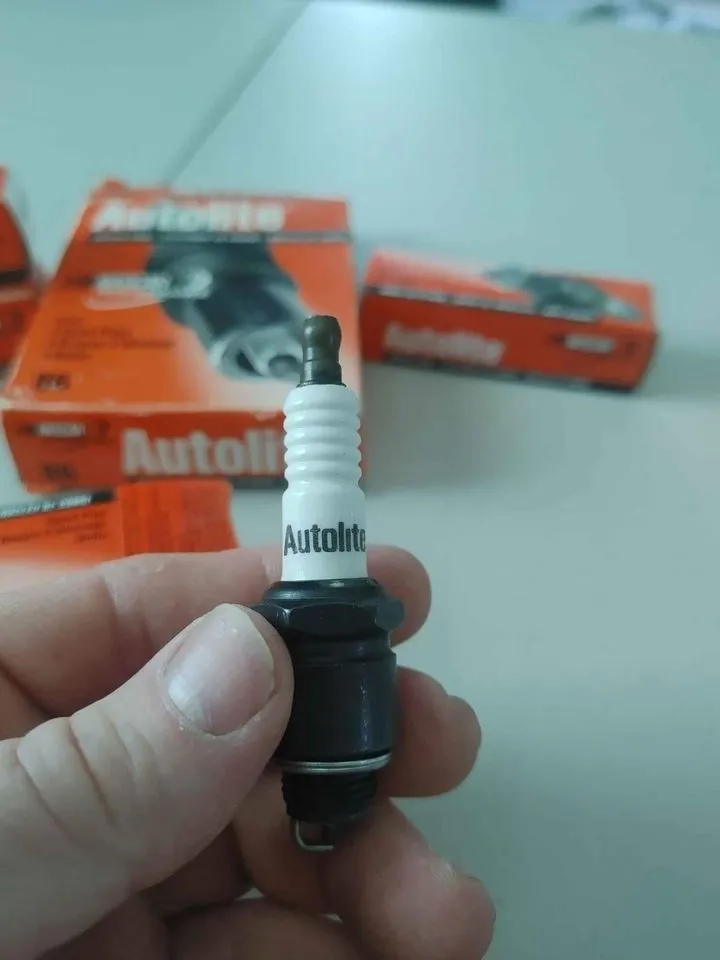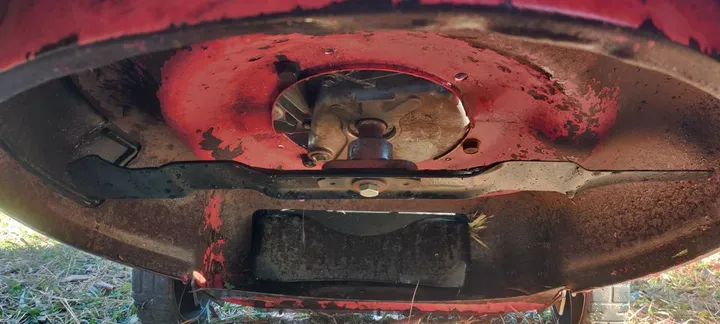As a seasoned professional in lawn mower maintenance and repair, I’ve diagnosed and resolved numerous cases where a push mower starts, then promptly dies—a common yet solvable problem for many homeowners.
Drawing on years of hands-on experience, I understand the inner workings of these machines and the typical issues they face.
In this article, we will delve into practical solutions and preventative measures that can save you time and frustration.
Trust in my expertise as we uncover the reasons behind this perplexing behavior and get your mower running smoothly again.
Quick Summary
- Common reasons for a push mower starting and then dying include a dirty carburetor, old fuel, a contaminated spark plug, or an obstructed fuel cap.
- To prevent a push mower from starting and then dying, regularly clean the carburetor, change the spark plug, and use fresh fuel.
- Approximately 75% of small engine repair technicians find that a dirty carburetor is the main reason for a mower starting then dying.
- In my experience, consistent maintenance and attention to small details can significantly reduce the chances of mower malfunctions.
Reasons a Lawn Mower Starts Then dies
As I’ve encountered numerous times, a lawn mower that starts and then stops abruptly can be quite frustrating.
I’ve learned that a dirty carburetor or old fuel are often to blame for this issue.
Additionally, problems like a contaminated spark plug or an obstructed fuel cap can interrupt a mower’s operation just as it gets going.
Dirty Carburetor
Identifying a dirty carburetor in your mower can be done by observing several key symptoms and conducting a thorough inspection.
The common symptoms include the engine starting but then sputtering and stopping shortly after, experiencing irregular engine idling or difficulty in starting, noticing black smoke emitting from the exhaust, and observing fuel leakage around the carburetor.
To confirm these symptoms, conduct an inspection by visually examining the carburetor for any signs of dirt, debris, or buildup.
Additionally, it’s important to check the air filter; a clogged air filter is often a culprit for causing dirt to accumulate in the carburetor, leading to these issues.
Addressing these signs promptly can prevent further complications and ensure smoother mower operation.
Solution
Blockages in the carburetor jet and fuel float are common issues that can cause a lawn mower to start and then stop. To ensure smooth operation, it’s important to regularly unblock and maintain these components.
Cleaning the carburetor jet involves removing debris and using carburetor cleaner to eliminate gummed-up fuel.
Additionally, checking that the fuel float moves freely is crucial for proper fuel flow. While these tasks may be intricate, they are essential for maintaining carburetor efficiency.
Beyond these specific tasks, adhering to a regular maintenance schedule is key to preventing such issues. This includes ignition troubleshooting, checking for compression problems, and ensuring that safety switches are properly engaged.
Also, it’s important not to overlook potential engine overheating, which can also contribute to sudden stops.
Regular maintenance and troubleshooting can make a significant difference between a smoothly running mower and one that fails to operate properly.
Aged Fuel
Sometimes, the problem with a mower isn’t mechanical but rather the fuel in the tank. If the gas has been sitting in the tank for an extended period, it can degrade, leading to engine sputtering and shutdown.
Over time, aged fuel can lose its volatility and form varnish-like deposits, negatively impacting your mower’s performance. The solution to this issue is straightforward: draining the stale fuel from the lawn mower’s tank.
This simple step can often resolve problems related to the engine starting and then stopping abruptly. By ensuring that your mower is running on fresh fuel, you can maintain its efficiency and avoid fuel-related engine troubles.
Here’s a quick guide to tackle other potential causes:
- Engine overheating
- Ensure proper ventilation
- Clean the cooling fins
- Faulty ignition
- Check spark plugs
- Safety switch issues
- Inspect switches for functionality
- Loose wiring
- Secure all connections
- Compression problems
- Perform a compression test
Contaminated or Malfunctioning Spark Plug

When your mower sputters to a halt, a common issue to investigate is the spark plug. A contaminated or malfunctioning spark plug can significantly disrupt the ignition process, leading to engine stalling shortly after starting.
A dirty spark plug, coated with carbon deposits or oil residue, can hinder the spark necessary for ignition, while a faulty one might not produce a spark at all.
To identify and fix this issue, you should first inspect the spark plug for signs of wear or contamination.
Look for a sooty or oily surface, cracks in the insulation, or an eroded electrode. If the spark plug is dirty, cleaning it might suffice, but if it’s damaged or excessively worn, replacement is the best course of action.
Regularly checking and maintaining the spark plug is crucial for keeping your mower running smoothly and efficiently.
Solution
Proper maintenance of a lawn mower’s spark plug involves more than just replacement; it requires precise gapping and adjustment.
The gap between the electrodes of a spark plug is crucial for efficient ignition, and using a spark plug gauge to measure and adjust this gap is essential to meet the mower’s specifications.
A correctly gapped spark plug ensures optimal performance and can prevent issues like the mower dying shortly after starting.
In addition to spark plug maintenance, several other factors should be checked to fix a mower that starts and then stops abruptly:
Excessive Gas or Oil
Occasionally, the reason behind a lawn mower sputtering out shortly after starting can be traced back to an excess of gas or oil.
This kind of overflow can lead to various issues: too much fuel can flood the engine, preventing it from starting properly, while an excess of oil can impede the function of the spark plug.
Flooding occurs when the carburetor delivers more fuel than the engine can burn, causing the unburnt fuel to douse the spark plug.
Similarly, an oil overflow can create a thick coating around the spark plug, hampering its ability to produce a sufficient spark for ignition.
Solution
To fix these issues, it’s important to first ensure the mower is on a level surface and then check the oil level, adjusting it if necessary. If the engine is flooded with gas, letting the mower sit for a while can allow the excess fuel to evaporate.
In cases of spark plug contamination, cleaning or replacing the plug may be required. Regularly monitoring and maintaining appropriate fuel and oil levels are key to preventing such problems and ensuring smooth operation of your lawn mower.
Related: Gas to Use in Bad Boy Mower
Obstructed Fuel Cap
When your mower starts up fine but then stops unexpectedly, an often-overlooked cause can be an obstructed fuel cap. The fuel cap on a lawn mower is designed not just to close the fuel tank but also to allow air to flow into the tank.
This air flow is crucial for maintaining proper pressure and ensuring the smooth flow of fuel to the engine.
When the vent in the fuel cap becomes clogged, it disrupts this balance, creating a vacuum in the fuel tank that can prevent fuel from properly reaching the engine, leading to stalling.
The obstruction is usually due to dirt, grass clippings, or debris that can accumulate over time. To resolve this issue, inspect the fuel cap and clean the vent thoroughly. In some cases, simply clearing the debris from the vent can restore proper air flow.
However, if the cap is damaged or the clog is severe, replacing the fuel cap might be necessary. Regularly checking and cleaning the fuel cap can prevent this issue and ensure uninterrupted mower operation.
Solution
When tackling the issue of a lawn mower that starts then stops due to an obstructed fuel cap, the first step is to remove the cap and inspect it for any debris or blockages.
Improper storage and maintenance neglect are common factors that can lead to a malfunctioning fuel cap.
Regular seasonal tune-ups can keep these problems at bay and ensure that my mower runs smoothly.
Jammed Lawn Mower Blades

Jammed lawn mower blades are a frequent issue when a push mower starts and then stops abruptly. This problem often arises when debris such as sticks, rocks, or even compacted grass becomes lodged in the blades.
When these foreign objects impede the blade’s motion, they can exert excessive strain on the engine, leading to an abrupt shutdown to prevent damage. This sudden halting is a safety mechanism designed to protect both the mower and the user.
Solution
To resolve this issue, first ensure the mower is turned off and the spark plug wire is disconnected for safety. Then, tilt the mower safely to access the underside (being careful not to spill oil or fuel) and remove any debris that’s obstructing the blades.
It’s also a good practice to regularly inspect and clean the mower blades after each use to prevent buildup.
Additionally, checking for and straightening any bent blades, or replacing the blades if they are excessively worn or damaged, can help maintain the mower’s performance and longevity.
By keeping the blades clear and in good condition, you can ensure smoother operation and reduce the likelihood of unexpected stops.
Clogged Air Filter
A clogged air filter is another common culprit that can cause your lawn mower to quit unexpectedly. The air filter in a mower plays a crucial role in ensuring the engine runs smoothly by filtering out dust and debris from the air entering the engine.
When this filter becomes clogged with dirt, it restricts the flow of air, which is essential for the combustion process in the engine.
This restriction can lead to various issues such as difficulty starting the mower, a rough-running engine, or even the engine stopping abruptly after starting.
Solution
To resolve the issue of a lawn mower that starts then stops due to a clogged air filter.
Regularly checking the air filter is an essential part of mower maintenance. A quick inspection will reveal if the filter is dirty or clogged. Depending on its condition, the filter may either need to be cleaned or replaced.
For paper filters, it’s usually best to replace them when they become dirty. Foam filters, on the other hand, can often be cleaned with soap and water, dried thoroughly, and then re-oiled before being put back into place.
Ensuring a clean and unobstructed air filter will not only prevent the mower from quitting unexpectedly but also help maintain the engine’s efficiency and longevity. Remember, a clean air filter is key to a smoothly running mower.
Water or Obstruction in Fuel Line
Water or obstruction in the fuel line is indeed a significant issue that can cause headaches with your push mower, particularly when it starts up only to sputter and stop moments later.
Water in the fuel line disrupts the flow of gasoline to the engine, as water and fuel do not mix well. This can result in incomplete combustion, leading to the engine sputtering or stalling.
Similarly, any obstruction in the fuel line, such as dirt or debris, can impede the smooth flow of fuel, causing similar issues.
Solution
To resolve these problems, the fuel system needs to be inspected and cleaned. For water in the fuel line, you’ll need to drain the old fuel from the tank completely and replace it with fresh gasoline.
It’s also advisable to check if water has accumulated in the carburetor bowl, which should be cleaned out as well. For obstructions, the fuel line and filter should be checked for blockages.
The fuel filter can often be the culprit and may need to be replaced if it’s clogged.
The health of the fuel line is essential for the smooth operation of a lawn mower. Regular inspection and maintenance of the fuel lines are crucial to identify and address any kinks, damage, or clogs.
Blockages in the fuel lines can often be cleared using carburetor cleaner and compressed air.
In cases of severe damage or persistent clogs that are not removable, replacing the fuel line with a new one of the same length and diameter becomes necessary.
This routine care is key to ensuring uninterrupted fuel flow, which is vital in preventing the mower from starting and then suddenly dying.
Learn More: Bad Boy Fuel Gauge Not Working
Testing and Replacing a Bad Fuel Pump
A lesser-known but vital aspect of lawn mower maintenance is the testing and replacement of a fuel pump, especially in models where the carburetor is positioned higher than the gas tank.
A failing fuel pump can manifest as leaks or inconsistent fuel flow, leading to the mower starting and then promptly dying. Testing involves checking the fuel flow to the pump and from the pump to the carburetor.
If the pump fails to deliver a steady or pulsating flow, replacement is necessary. This process, though somewhat technical, is crucial for models requiring a fuel pump and can be a game-changer for mower performance.
Our Verdict
In my experience, keeping a good large yard push mower running smoothly is all about regular care and knowing a few troubleshooting tricks.
From dealing with a dirty carburetor to handling a tricky spark plug, I’ve learned that these issues are often simpler to fix than you might think. Regular maintenance, like cleaning air filters and using good quality fuel, really makes a difference.
Sure, there are times when the problem is beyond my DIY skills, and I need to consult a professional, but mostly, I’m proud to say I can handle it. Keeping my mower in top condition not only saves me time but also gives me a sense of accomplishment.
Remember, a little effort goes a long way in preventing those frustrating start-then-stop moments!
Frequently Asked Questions
How can I tell if the problem with my mower is due to old fuel versus a clogged carburetor?
I’ll check the fuel age first; if it’s fresh, I’ll look for carburetor symptoms like engine sputtering. Proper idle adjustment and sticking to a maintenance schedule can prevent these issues.
Could a faulty spark plug be responsible for my mower starting and then dying, even if it looks clean and properly gapped?
Yes, even a clean, well-gapped spark plug can cause issues. Spark deterioration affects ignition timing, disrupting the fuel mixture, air flow, and compression check, leading to starting problems in my mower.
Are there any quick diy fixes I can try before taking my mower to a professional for repairs?
I’d check the fuel filter, clear any airflow obstructions, ensure the safety switch functions, inspect the primer bulb, and adjust the throttle control as quick DIY fixes before seeking professional mower repairs.
How can environmental factors, such as humidity or altitude, affect my lawn mower’s performance and potentially cause it to start and then die?
I’ve noticed weather impact can mess with my mower’s performance. High humidity means moisture interference, and at different altitudes, I must adjust the air-fuel ratio. Seasonal tuning is crucial for reliability.
Is there a way to prevent this issue from happening again in the future, such as through regular maintenance or using specific types of fuel additives or stabilizers?
I’m maintaining my mower by following a strict maintenance schedule, using high-quality fuel, and ensuring the air filter’s clean. Proper storage and regular engine tuning also help prevent any starting issues.


